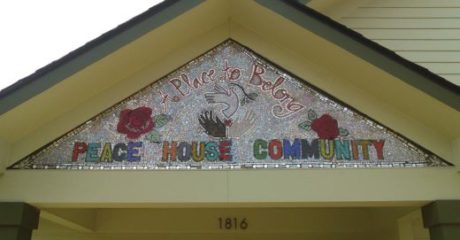
By MARTI MALTBY
After over 20 years of working with social services agencies that serve the homeless, I have seen many different responses to ending homelessness. Some have been more successful than others, while some have benefitted from having good salespeople promoting them as the next big thing. Recently, I have been encouraged by the work of the Native American community, especially with efforts around Franklin and Bloomington. In the last couple of months they have opened two overnight drop-in centers, coordinated overnight street outreach efforts, made sure the issue of homelessness doesn”™t slip to the back pages, and generally made a positive difference to the homeless and the greater community.
Most of the responses to homelessness that I have seen haven”™t started at this level. When homelessness first became a national problem in the 1980s, this was how people addressed it. Churches, community associations, and similar groups saw the problem growing and took action. As homelessness escalated and overwhelmed what neighborhoods could do, government programs began addressing the crisis. (This is an oversimplification, since homelessness and the federal department of Housing and Urban Development predate the current housing crisis, but it gives you the general outline of the situation.)
Over time, homelessness became an institution, with children who grew up in homeless families becoming homeless as adults, only to see the cycle repeat with their children. Responses to homelessness followed a similar path with scientific studies documenting which programs were most effective, only to have later studies show that new approaches were better, with still more studies showing that the earlier studies were flawed in their assumptions. All of this resulted in shifting priorities and funding as society tried to grapple with the ending homelessness. Today, phrases like “cost effective”, “best practice”, “evidence based” and others dominate the conversation.
And into this arena stepped all parts of the Native American community. Last year the encampment sprung up, and no matter what you thought of it, you had to admit that it made homelessness, especially Native American homelessness, impossible to ignore. Other parts of the community mobilized, pushing for funding and solutions, and when those didn”™t materialize fast enough, the community put together the responses I mentioned above.
What has impressed me most about this effort is how personally those trying to solve the problem take the problem. At community meetings, the problem isn”™t “homelessness”; rather it is that “our relatives” are in danger and dying for lack of resources. The solution isn”™t choosing the best model; it is taking concrete steps to turn available space into shelter as quickly as possible. Stopgap measures are adopted until permanent measures can get up to speed. Activists are not afraid of publicly challenging each other or the organizations at the meetings to do more, but it isn”™t done in an effort to shame or self-promote. It is done because of the urgency of seeing family members left in a tragic situation. The speed and determination that the Native community has brought to this problem could be a better model than any other model I”™ve ever seen.









